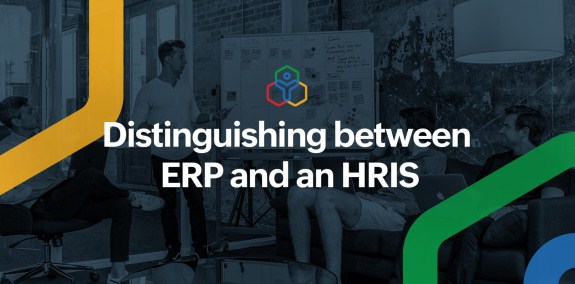In the realm of modern business operations, the integration of technology has revolutionized how organizations manage their resources and streamline operations. Two fundamental systems that play a pivotal role in this transformation are Enterprise Resource Planning (ERP) and Human Resource Information Systems (HRIS). These systems, while distinct in their functionalities, often work in tandem to optimize business processes and enhance overall efficiency.
What is ERP?
ERP, or Enterprise Resource Planning, refers to a suite of integrated applications that organizations use to manage and automate their core business processes. These typically include finance, procurement, manufacturing, sales, and human resources. The primary goal of ERP systems is to provide a unified platform that facilitates real-time data flow and collaboration across various departments within an organization.
Benefits of Implementing ERP Systems
Streamlined Processes
One of the key advantages of ERP systems is their ability to streamline complex business processes. By consolidating disparate systems into a single, unified platform, organizations can eliminate redundancies, reduce manual errors, and improve overall operational efficiency.
Data Centralization
ERP systems enable centralized data storage and management, ensuring that all departments have access to accurate and up-to-date information. This centralized approach enhances decision-making capabilities and promotes cross-functional collaboration within the organization.
Types of ERP Modules
ERP systems consist of various modules, each catering to specific business functions:
Finance and Accounting
Modules dedicated to financial management, including general ledger, accounts payable/receivable, budgeting, and financial reporting.
Human Resources Management
HR modules encompass employee information management, payroll processing, benefits administration, recruitment, and performance management.
Supply Chain Management
Modules that optimize supply chain processes such as inventory management, procurement, order processing, and logistics.
Implementation Challenges of ERP
While ERP systems offer significant benefits, their implementation can pose several challenges for organizations:
Cost Considerations
The initial investment required for ERP implementation, including software licensing, hardware upgrades, and training costs, can be substantial for many organizations.
Integration Complexity
Integrating ERP systems with existing legacy systems and ensuring data compatibility across different platforms can be complex and time-consuming.
What is HRIS?
HRIS, or Human Resource Information Systems, are specialized software applications that focus on managing human resource functions within an organization. Unlike ERP systems, which cover a broader range of business processes, HRIS specifically caters to HR-related tasks such as employee record-keeping, payroll management, and regulatory compliance.
Key Features of HRIS
Employee Database Management
HRIS systems maintain comprehensive employee databases containing information such as personal details, employment history, skills, and performance records. This centralized repository facilitates efficient HR management and decision-making.
Payroll Management
HRIS automates payroll processing tasks, including salary calculation, tax deductions, benefits administration, and compliance with regulatory requirements. This ensures accuracy and timeliness in payroll operations while minimizing errors and discrepancies.
Integrating ERP with HRIS
In many organizations, integrating ERP with HRIS systems is essential to ensure seamless data flow and operational efficiency. By synchronizing HR-related data with broader business processes managed by ERP systems, organizations can achieve greater synergy and alignment across departments.
Benefits of Integrating ERP with HRIS
Data Consistency
Integration between ERP and HRIS systems eliminates data silos and ensures consistency in employee information across the organization. This unified approach reduces duplication of efforts and enhances data accuracy for informed decision-making.
Efficiency Gains
By automating repetitive HR tasks and integrating them with broader ERP functionalities, organizations can improve overall operational efficiency and employee productivity. This integration streamlines workflow processes, reduces manual intervention, and allows HR teams to focus on strategic initiatives.
Choosing the Right ERP and HRIS Systems
Selecting suitable ERP and HRIS systems requires careful consideration of several factors:
Needs Assessment
Conducting a thorough needs assessment to identify specific organizational requirements, challenges, and goals is essential. This evaluation helps in selecting systems that align with business objectives and scalability needs.
Scalability
Choosing scalable ERP and HRIS solutions ensures that the systems can grow and adapt to accommodate future organizational expansion and technological advancements. Scalability also allows for flexibility in adding new functionalities and integrating with third-party applications as needed.
Case Studies: Successful ERP and HRIS Implementations
Company A: Transformation in HR Operations
Company A implemented an integrated ERP and HRIS solution to streamline HR operations, from recruitment and onboarding to performance management and payroll processing. By consolidating HR processes into a unified platform, the company achieved significant efficiency gains and improved employee satisfaction.
Company B: Optimizing Supply Chain with Integrated Systems
Company B integrated ERP modules with HRIS functionalities to enhance supply chain management and workforce planning. This integration enabled real-time data sharing between supply chain operations and HR functions, resulting in improved inventory management, reduced lead times, and enhanced resource allocation.
Future Trends in ERP and HRIS
As technology continues to evolve, several emerging trends are shaping the future of ERP and HRIS systems:
AI and Machine Learning Integration
The integration of artificial intelligence (AI) and machine learning (ML) capabilities into ERP and HRIS systems enables predictive analytics, intelligent decision-making, and automation of repetitive tasks. AI-powered insights help organizations optimize resource allocation, forecast demand, and enhance employee engagement.
Cloud-Based Solutions
Cloud-based ERP and HRIS solutions offer scalability, accessibility, and cost-efficiency advantages over traditional on-premises systems. Cloud technology enables remote access, seamless updates, and enhanced data security, making it an attractive option for modern businesses looking to leverage digital transformation.
Conclusion
In conclusion, ERP and HRIS systems play indispensable roles in modernizing organizational operations, enhancing efficiency, and fostering strategic decision-making. While ERP systems integrate core business functions to streamline processes and improve data management, HRIS focuses specifically on optimizing HR-related tasks such as payroll, employee records, and compliance. By integrating ERP with HRIS, organizations can achieve greater synergy, data consistency, and operational efficiency, paving the way for sustained growth and competitive advantage in today’s dynamic business environment.
